May 13, 2025
Should You Play in Your First Amateur Tournament? Here’s How to Prepare

A complete guide for first-time competitive golfers who want to test their game, build confidence, and enjoy the thrill of tournament play

Taking the Leap from Casual Rounds to Competitive Golf
For many golfers, the thought of entering an amateur golf tournament is both exciting and intimidating. You’ve spent time refining your swing, logging weekend rounds with friends, and maybe even tracking your stats—but how do you know if you’re truly ready to compete? The transition from casual golf to competitive play is a natural next step for many passionate players, but it requires more than just a strong drive or a low handicap. It demands mental toughness, a deeper understanding of course management, and a willingness to embrace pressure.
Competitive amateur tournaments offer a structured, rewarding environment to test your skills, learn more about your game, and gain experience that can’t be replicated in casual play. Whether you’re playing in a local club championship, a regional amateur event, or a USGA qualifier, the experience can be transformative. But success—and enjoyment—hinges on preparation.
In this guide, we’ll walk through every aspect of getting ready for your first amateur golf tournament. From mental preparation to equipment checks, practice routines, and tournament-day strategies, we’ll break it all down so you walk onto the first tee with confidence. If you’re asking yourself, “Should I play in an amateur golf tournament?”—the answer is likely yes. You just need to prepare the right way.
Why Playing Competitive Golf Is Worth It
Amateur golf tournaments aren’t just for elite players. They’re open to golfers of all skill levels who meet the entry requirements—and that inclusivity is part of what makes them so valuable. By entering a tournament, you’re joining a community of like-minded players who share your passion for the game and your desire to challenge themselves. It’s one of the most fulfilling ways to grow as a golfer.
One of the most immediate benefits of playing tournament golf is that it sharpens your focus. Casual rounds often allow for mulligans, gimmies, and second chances. But in a tournament, every stroke counts. That pressure teaches you to commit fully to each shot, stay present, and learn from mistakes rather than brush them off. You start to understand your tendencies under stress, and that insight is priceless.
There’s also a mental transformation that happens when you play competitively. You’ll likely feel nerves you’ve never felt before, and your usual swing might feel unfamiliar under pressure. But this discomfort is where real growth begins. Learning to handle pressure, stay composed, and adapt in the moment will pay off not just on the course, but in many areas of life. Golf becomes not just a hobby, but a proving ground.
If you’re serious about improving your game, there’s no substitute for tournament experience. The feedback you receive—both in score and self-awareness—will guide your practice and shape your approach. So if you’ve been wondering whether competitive golf is “worth it,” the answer is a resounding yes. It’s a test of character, skill, and strategy that will change how you view the game.
Choosing the Right Tournament for Your Skill Level
Not all amateur golf tournaments are created equal. Before you sign up, it’s essential to find an event that aligns with your current skill level and goals. Jumping straight into a USGA qualifier or state amateur championship might not be the best move if you’re relatively new to tournament play. The key is to find a tournament that will challenge you without overwhelming you.
Your home golf club or local public courses are great places to start. Many offer club championships, member-guest events, and low-stakes tournaments that are perfect for first-timers. These events are usually well-organized, welcoming, and provide a solid introduction to tournament structure. The competition is real, but the atmosphere is often supportive and friendly.
Once you’ve gained confidence in a local setting, you can start exploring regional amateur tournaments or state-sanctioned events. These typically require a handicap index within a certain range and may include qualifying rounds. The level of play is higher, and the stakes are a bit greater, but so is the opportunity to elevate your game. This is where you’ll begin to face more accomplished players and tougher course setups.
When choosing a tournament, read the entry requirements carefully. Some events require a verifiable handicap index, while others are open to the public. Pay attention to tee assignments, format (stroke play, match play, best ball, etc.), and field size. The goal is to find an event that excites you and pushes you just enough to stretch your comfort zone. Once you've registered, the real preparation begins.

Fine-Tuning Your Practice for Tournament Conditions
How you practice in the weeks leading up to your first amateur golf tournament can have a significant impact on your performance. Casual range sessions and weekend rounds are helpful, but they won’t fully prepare you for the structure and pressure of competitive golf. You need to shift your focus to more purposeful practice that mirrors tournament conditions.
Start by recreating the pressure you’ll feel on tournament day. This means putting yourself in uncomfortable situations during practice—playing for score, setting consequences for missed shots, or simulating first-tee nerves. One effective method is to play nine holes alone with strict rules: no mulligans, no second putts, and a fully tracked score. Record your performance and look for patterns.
Short game practice should become a top priority. Tournaments are often decided within 100 yards of the hole, so invest time in chipping, bunker play, and putting under pressure. Create practice games that require you to get up and down or make putts to “save par.” Learning to rely on your short game can be a huge asset when your full swing isn’t perfect.
Finally, pay attention to course management. Work on shaping shots, hitting to specific targets, and choosing smarter lines off the tee. Think like a competitor: it’s not always about hitting the perfect shot, but about making the smart play. During tournament rounds, discipline and decision-making are often more valuable than pure ball-striking ability. Train your mind as much as your mechanics.
Understanding Tournament Rules and Etiquette
One of the biggest adjustments for first-time competitors is understanding the stricter rules and etiquette of tournament golf. In casual rounds, it’s easy to overlook things like precise ball marking or penalty relief procedures—but in a tournament, every detail matters. A simple rules mistake can cost you strokes or even disqualification if you're not careful.
Before your event, take time to familiarize yourself with the USGA Rules of Golf. Focus on common scenarios like taking drops, identifying hazards, relief from cart paths or immovable obstructions, and proper procedures for lost balls. Tournaments usually have a rules sheet or committee available, so don’t hesitate to ask questions before or during your round if you're unsure.
Etiquette also takes on new weight in competitive play. Pace of play is critical, and slow groups can be penalized. You’ll need to be conscious of ready golf, staying quiet during other players’ shots, and maintaining a respectful attitude throughout. Integrity and sportsmanship are cornerstones of amateur competition, and how you conduct yourself matters just as much as how you play.
Scoring in a tournament requires extra attention. You’ll often be responsible for another player’s scorecard as a marker, and someone else will keep yours. After each hole, confirm scores with your playing partners, and review everything carefully at the end of the round before signing. It’s your responsibility to ensure your card is accurate. Taking these rules seriously shows respect for the game—and for your fellow competitors.
Mental Preparation: Staying Calm Under Pressure
The mental side of competitive golf is often the most daunting part for new players. Nerves are normal—especially on the first tee—and how you manage them can be the difference between enjoying the experience and unraveling early. The good news is that mental toughness can be developed, and your first tournament is the perfect training ground.
Start by adjusting your expectations. Your first tournament is about learning and growth, not winning. That mindset shift can help you focus on the process rather than the result. Accept that nerves will be part of the day, and use them to your advantage. Channel nervous energy into focus. Take deep breaths, visualize your shots, and stay in your routine.
Develop a mental game plan that includes positive self-talk, a solid pre-shot routine, and strategies for bouncing back after mistakes. Tournament golf is unpredictable, and even top players make double bogeys. The key is to avoid compounding mistakes by reacting emotionally. Stay present. Don’t dwell on the past or worry about your score. One shot at a time is more than a cliché—it’s a winning strategy. Visualization and journaling can also help. In the days leading up to your event, picture yourself walking confidently to the first tee, executing your swing, and handling challenges with poise. After practice rounds or competitive experiences, write down what worked and what didn’t. Build mental resilience by reflecting, adjusting, and reinforcing your strengths.

What to Bring and How to Prepare Logistically
Tournament preparation isn’t just mental and physical—it’s logistical. A little planning can go a long way in ensuring that you show up relaxed, ready, and fully equipped. First, check the tournament information for details on arrival time, dress code, tee times, and any player meetings or rules briefings. Knowing the schedule removes unnecessary stress on game day.
Pack your golf bag with care. In addition to your usual 14 clubs, bring extra golf balls, tees, gloves, and a rangefinder or yardage book if allowed. Make sure your clubs and grips are clean, and that everything is in good working order. If you’re walking, double-check that your bag is comfortable and organized for easy access to essentials.
Don’t overlook the little things. Bring sunscreen, a hat, water, snacks, and rain gear if the forecast is uncertain. Wear comfortable, tournament-appropriate clothing and shoes you trust. Plan your meals and hydration in the 24 hours leading up to your tee time. Avoid heavy foods, stay hydrated, and get a good night’s sleep. The goal is to eliminate distractions and arrive fully prepared to focus on golf.
Finally, arrive early. Give yourself time to check in, warm up without rushing, and settle into the environment. Hit the range, roll a few putts, and take a few deep breaths. The best rounds start with a calm, unhurried mindset—and that begins long before your opening tee shot.
Tournament Day: Navigating Your First Competitive Round
The morning of your first amateur golf tournament will likely bring a mix of excitement and anxiety. That’s completely normal. The key is to stick to your plan and trust your preparation. You’ve practiced, visualized, and packed everything you need—now it’s time to play.
Start with a warm-up routine that mirrors your normal practice. Avoid hitting too many balls or changing your swing mechanics at the last minute. Focus on getting your body loose and your tempo smooth. Move to the short game area to dial in your feel around the greens. On the putting green, work on distance control more than making putts.
When it’s your turn to tee off, introduce yourself to your playing partners and the scorer. Confirm who is marking your card and vice versa. Take a deep breath and commit to your opening shot. Don’t worry if you feel nervous—that’s a sign that you care. As the round progresses, settle into your rhythm. Stick to your routine, play smart, and enjoy the experience.
Mistakes will happen, and you may find yourself in unfamiliar situations. Stay calm, use the rules to your advantage, and don’t let one bad hole define your round. Keep grinding. Many tournaments are decided by how players manage adversity. And when the final putt drops, no matter the score, take pride in completing your first tournament. You did it—and now you have a foundation to build on.
From First Tee to First Trophy
Your first amateur golf tournament is more than just a round of golf—it’s a milestone. It marks the moment you stop playing at golf and start playing for something. It’s the beginning of a deeper relationship with the game, one that includes challenge, growth, and a heightened sense of purpose. Whether you shoot your best score or stumble through the round, you’ll walk away with something valuable: experience.
Competitive golf doesn’t require perfection. It demands preparation, commitment, and heart. And once you’ve played that first event, you’ll begin to see yourself differently—not just as a golfer, but as a competitor. You’ll learn where your game shines and where it needs work. You’ll build resilience, confidence, and camaraderie with fellow players who share your passion. So should you play in your first amateur tournament? Absolutely. Take the leap. Prepare like it matters—because it does. And when you stand on the first tee, remind yourself: this is what you’ve trained for. Go out and enjoy every moment.
More from Fairway Control












